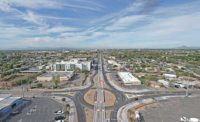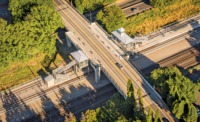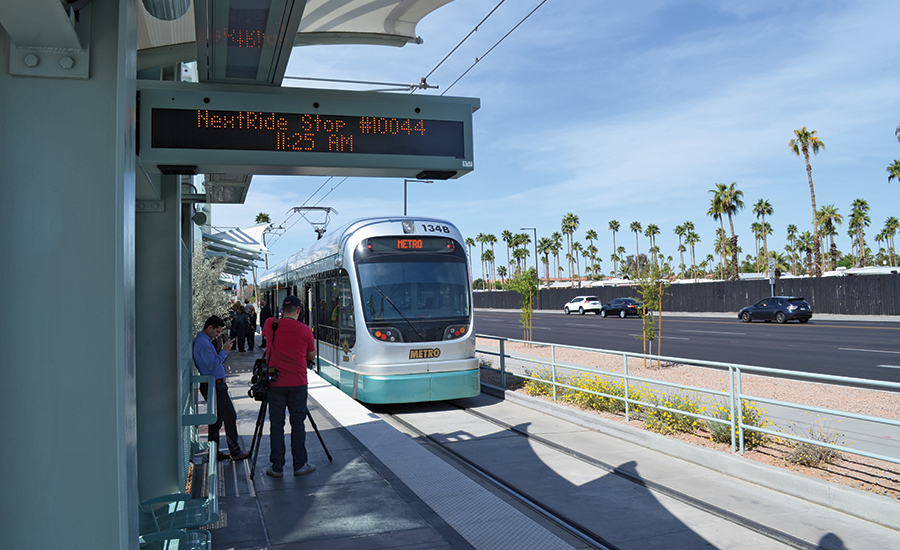Airport/Transit Best Project - Valley Metro Light Rail Northwest Extension

IMAGE COURTESY OF SUNDT

IMAGE COURTESY OF SUNDT


Valley Metro Light Rail Northwest Extension
Phoenix
Best Project
Owner/Developer Valley Metro Rail
General Contractor Sundt/Stacy and Witbeck Joint Venture
Lead Design Firm AECOM
Subcontractors Action Barricade; Birdair; Bryce Asphalt Milling; C&S Sweeping; Cemex; Corrpro; CPC Construction; Dougherty Painting; HDR; Kimbrell Electric; M&P Contracting; Mass Electric Construction; Nesbitt Contracting; SmithCraft; Stantec; Sunnyside Masonry; The Fishel Co.; ViaSun Corp.
A 3.2-mile addition to the Phoenix metropolitan area’s Valley Metro Rail system, the Northwest extension was constructed along 19th Avenue from Montebello to Dunlap avenues, a section of roadway with high traffic counts and more than 300 property owners.
This extension included constructing the traction power substations off site—a first for the rail system. Pre-manufacturing the substations allowed the team to enter the field testing five months earlier than with a site-built TPSS, according to the project team.
“This was a huge time saver, as the amount of onsite testing was drastically reduced and any major troubleshooting was completed in a factory setting prior to the units arriving on site,” says Chris Elison, an engineer with the Sundt and Stacy and Witbeck joint venture.
The $75.1-million project included roadway widening, installation of embedded double track for the entire alignment, train substations, traffic signals and a park-and-ride lot at Dunlap Avenue.
The project also included curb-to-curb replacement of utility infrastructure, including more than 50 miles of water, sewer, storm, gas, electric and communications utilities. The utility phase was completed three months ahead of schedule, which the project team credits for laying the groundwork for overall completion before deadline. Of particular concern to the construction team was a 60-year-old, 36-in. city of Phoenix water line that had to be moved 8 to 12 ft, depending on its proximity to eventual trackway.
“The city was extremely concerned that this tie was completed prior to the summer heat when a shutdown would not be feasible and would have a drastic negative effect to the project schedule,” Elison says.
Communicating with the community about roadway restrictions and service interruptions was done through a weekly email blast and the development of a mobile app.





